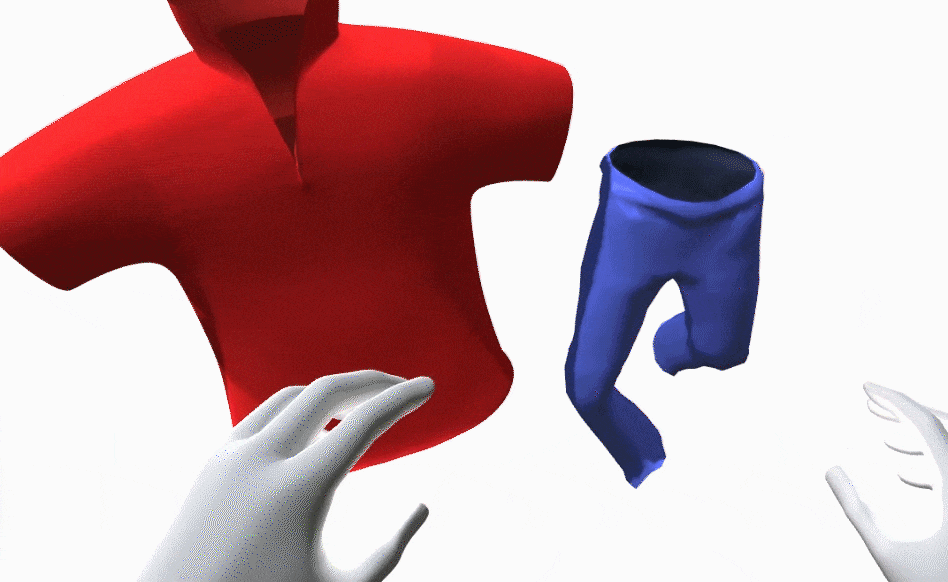
#consumer electronics #gaming #human-machine interaction #learning #interfaces #social science #affective computing #ethics #industry #interactive #computer science #interfaces #learning #entertainment #art #design #creativity #history #technology #archives
Boo Box, 2019.
2’x2’ aluminum box, 6’ round carpet, khaki fabric, dress shirt fabric, denim, foam, LCD monitor, one pair of New Balance Sneakers, projection tray, round carpet (for VR boundary). Unity Game Engine, Looking Glass Display, Oculus Rift, encased MSI VR computer, embedded Oculus sensors, hand- held controllers.
Boo Box is a “virtual reality dressing room”. I developed this interactive virtual reality project in order to investigate the way we perform gender in virtual spaces, through the use of real-time clothing simulations. This enabled users to try on realistic fabric simulations in VR, each of which emulated playful gender constructs.
The “virtual hands” of a user’s controllers responded to fabric realistically, depending on stretchiness, starchiness, or other properties of tactility.
The goal of the project was for a virtual avatar to “dress themselves” in virtual garments, by accurately grabbing and attaching each clothing simulation to their invisible avatar, composing a body in the process.
This project posed questions about the future effects of virtual avatars on the nature and portrayal of gender identity, enabling viewers to contemplate and experiment with their own gender representation in a virtual context.
From the virtual to the physical and to the “volumetric”, multiple dimensions of interaction were explored through this project.
The contemporary volumetric display company, Looking Glass Factory Inc, began shipping the world’s first 8K light field display in 2019. Considered the first medium for interacting and viewing 3D holograms, the platform enables interactive holographic applications
by interfacing with the Leap Motion Controller. I was an early adopter of this platform, and was given access to a Kickstarter developer kit.
I began developing integrations between gesture controllers and live reactive 3D simulations.
I experimented with this new technology, the “Looking Glass”, to engage users with a non-VR experience for interacting with computer-generated fabric simulations.
By using gestures through a Leap Motion controller, a user’s hand would trigger fabric to be stretched, moved, or bundled, depending on the interaction.




The Texture of Gender
From the virtual to the physical and the volumetric, multiple modes of interaction were explored in this project.
This technological experiment focused on a significant issue in meta-technology, the ritual of gender and the rendering of real-time clothing as they relate to the experience of virtual identity.

Three Dimensions of Experience
This hybrid physical/digital installation also enabled users to manipulate and wear other people’s physical clothing, sourced from eBay, stored inside the box housing the VR apparatus.
In the physical installation environment, a large carpet set the boundaries for the VR space, with an emphasis on merging the tactile experience of real texture with the exploration of virtual texture simulations.

Exhibit and Interactions
This project was exhibited in the New Orleans Film Festival, Cinema Reset VR Exhibit, curated by Rachel Lin Weaver, New Orleans, LA as well as at the Index Art Center, Newark, NJ, in a Group Exhibit, “New & Improved”, curated by Sophie Sobers.









